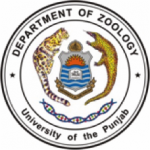Northern Arabian Sea: Rare Fish Diversity and Biogeographic Affinities
Northern Arabian Sea: Rare Fish Diversity and Biogeographic Affinities
Bushra Sial1, Arif Muhammad Khan1, Mohsan Raza1,6*, Azhar Abbas Khan2, Sayyad Ali Raza Bukhari1, Muhammad Kashif Hanif3, Sher Khan Panhwar4, Muhammad Ashfaq5
ABSTRACT
To share on other social networks, click on any share button. What are these?








